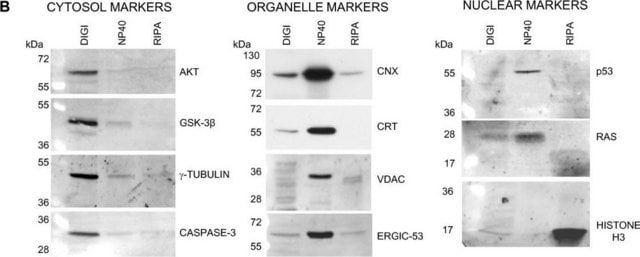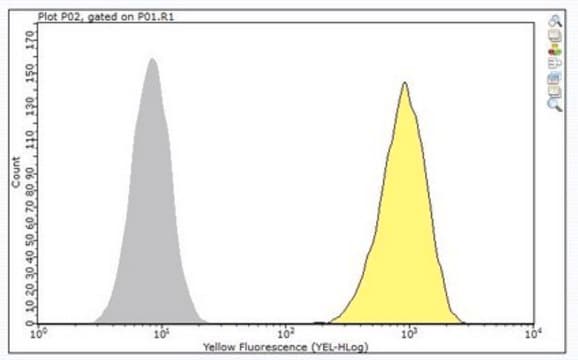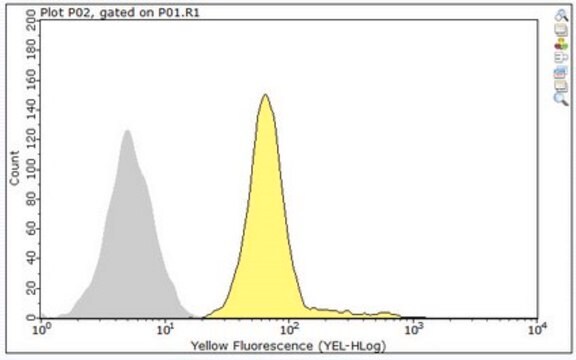ABC1442
Anti-K-Ras4A Antibody, Isoform-specific
from rabbit, purified by affinity chromatography
Synonym(s):
GTPase KRas, isoform 2A, c-K-ras, isoform 2A, K-Ras4A, c-Ki-ras, isoform 2A, K-Ras 2, isoform 2A, Ki-Ras, isoform 2A
About This Item
Recommended Products
biological source
rabbit
Quality Level
antibody form
affinity isolated antibody
antibody product type
primary antibodies
clone
polyclonal
purified by
affinity chromatography
species reactivity
human
technique(s)
western blot: suitable
NCBI accession no.
UniProt accession no.
shipped in
ambient
target post-translational modification
unmodified
Gene Information
human ... KRAS(3845)
General description
Specificity
Immunogen
Application
Apoptosis & Cancer
Western Blotting Analysis: A representative lot detected the presence of K-Ras4A in total Ras immunoprecipitates from colorectal carcinoma (HCT116, HT29, and CaCo-2) and T24 urothelial carcinoma cell lysates using a pan-Ras mAb (Cat. No. OP40), clone RAS 10 (Tsai, F.D., et al. (2015). Proc. Natl. Acad. Sci. U. S. A. 112(3):779-784).
Quality
Western Blotting Analysis: A 1:5,000 dilution of this antibody detected exogenously expressed K-Ras4A GFP fusion protein in 20 µg of lysate from transfected HEK293 cells.
Target description
Physical form
Storage and Stability
Other Notes
Disclaimer
Not finding the right product?
Try our Product Selector Tool.
recommended
Storage Class Code
12 - Non Combustible Liquids
WGK
WGK 1
Flash Point(F)
Not applicable
Flash Point(C)
Not applicable
Certificates of Analysis (COA)
Search for Certificates of Analysis (COA) by entering the products Lot/Batch Number. Lot and Batch Numbers can be found on a product’s label following the words ‘Lot’ or ‘Batch’.
Already Own This Product?
Find documentation for the products that you have recently purchased in the Document Library.
Our team of scientists has experience in all areas of research including Life Science, Material Science, Chemical Synthesis, Chromatography, Analytical and many others.
Contact Technical Service








